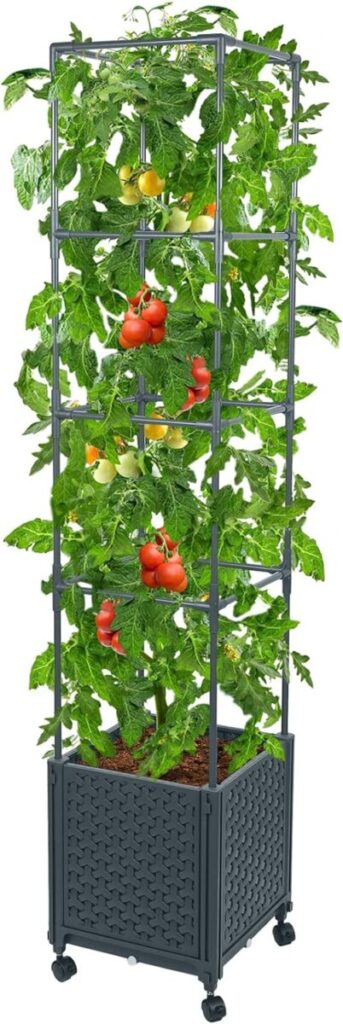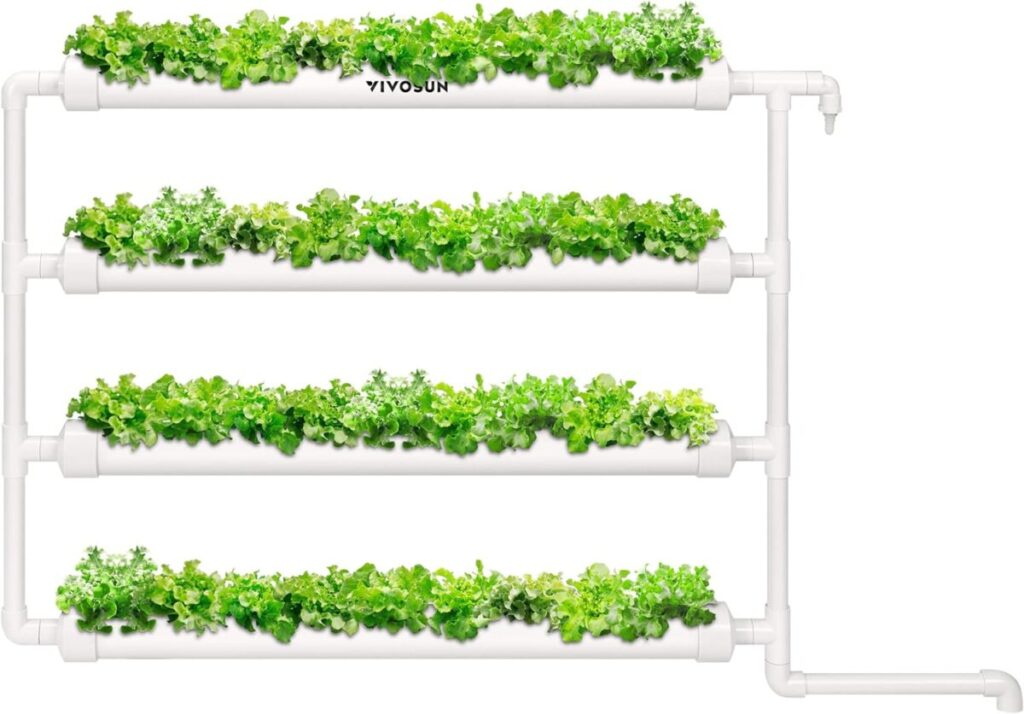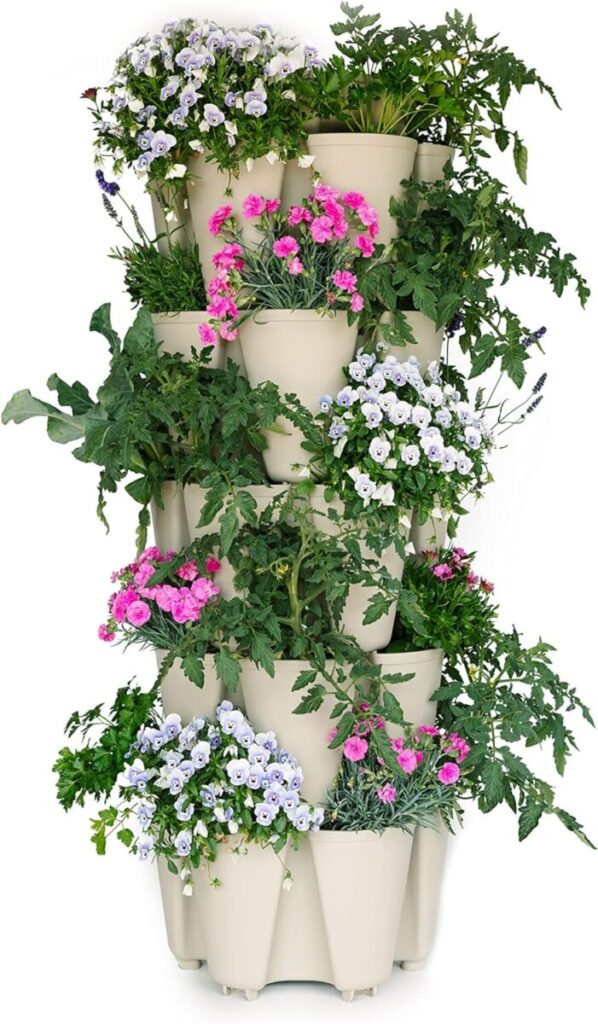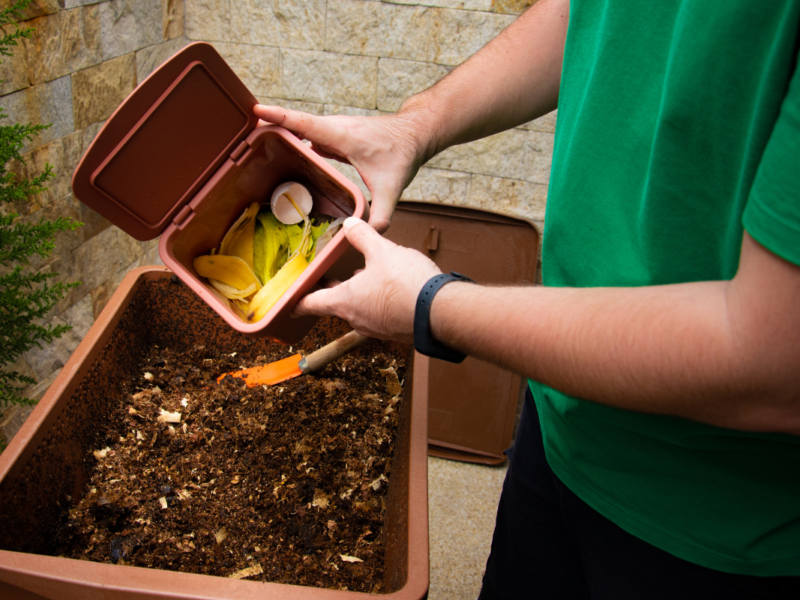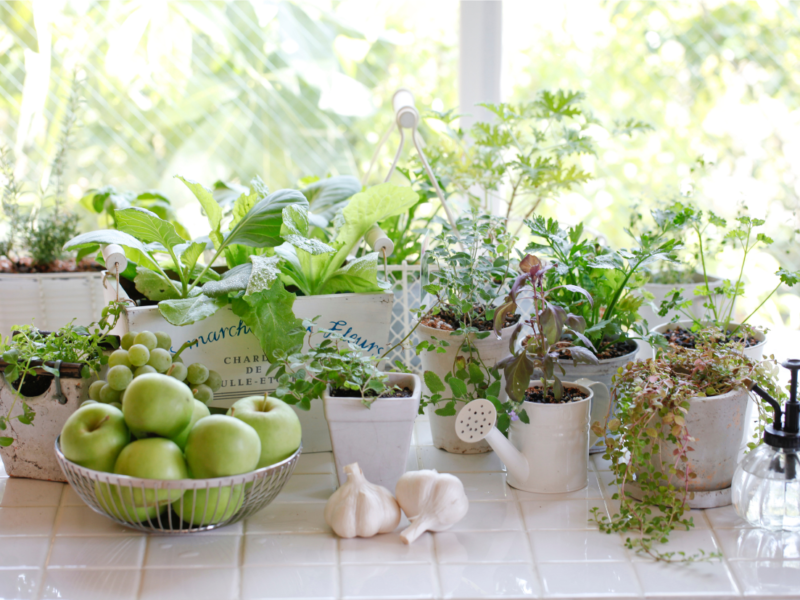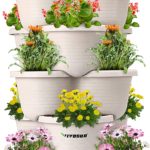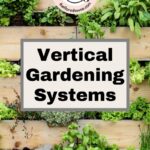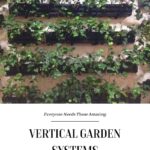Vertical gardening has taken the horticultural world by storm, providing innovative solutions for limited space while adding a touch of greenery to urban landscapes. Explore the best vertical gardening systems to transform your living space into a thriving oasis. In this post, we’ll delve into various vertical gardening products, from self-watering systems to indoor setups, and offer our insights into the best options on the market.
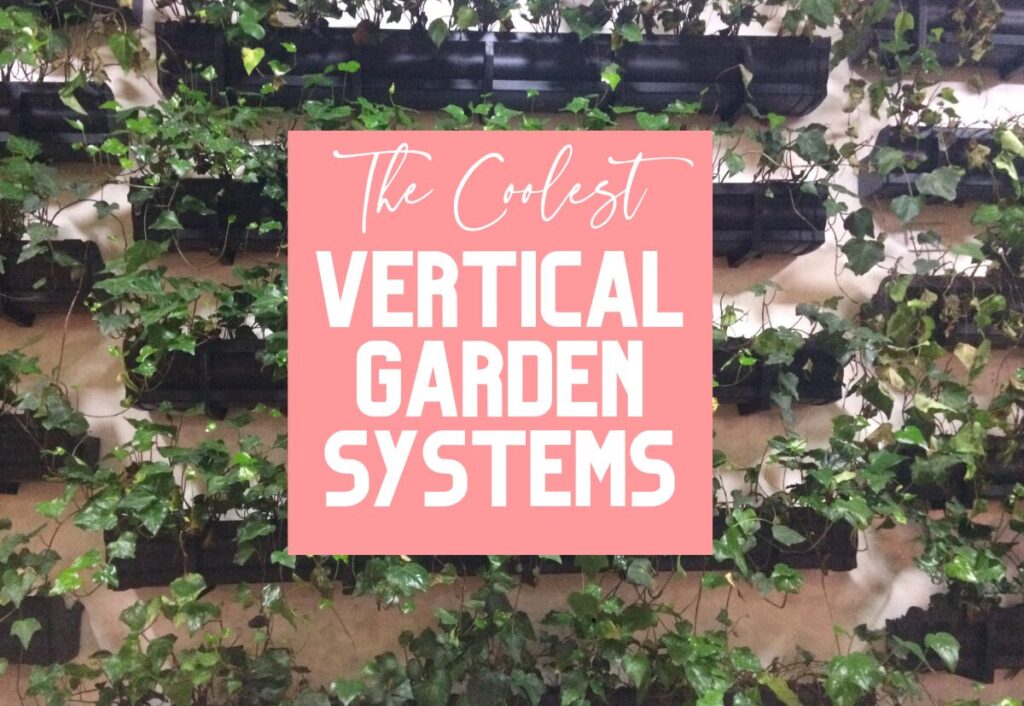
This post may contain affiliate links, which means I can receive a commission from any purchase made from the links. As an Amazon Associate, I earn from qualifying purchases. See the disclosure policy here.
Starting vertical gardening is an exciting venture that promises a lush and space-efficient place to grow an abundance of food. Choosing the right vertical system is crucial in ensuring success in the garden.
With an array of options on the market, each catering to different needs and preferences, making an informed decision is essential. This post helps you find the perfect vertical gardening system with the best space availability, plant selection, and personal aesthetics.
This post shows you how to get started with vertical gardening systems.
In this guide, we’ll navigate the diverse landscape of vertical gardening systems, exploring key features, innovative designs, and practical considerations to help you choose your unique garden goals. Let’s delve into vertical gardening!
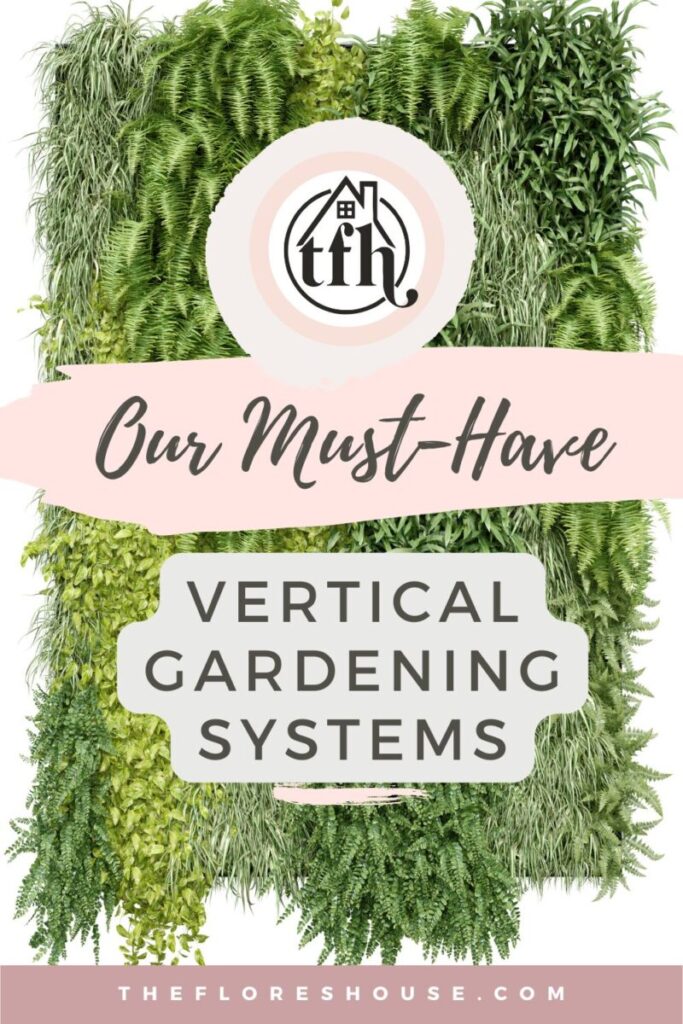
What is Vertical Gardening?
Vertical gardening is a method of growing plants vertically or upwardly, utilizing various structures and techniques to make the most efficient use of space.
Instead of traditional horizontal garden beds, vertical gardening involves arranging plants in a vertical plane, often against walls, fences, trellises, or other vertical structures. This gardening approach is particularly beneficial for individuals with limited outdoor space, such as those living in urban areas or apartments.
Vertical gardening can take various forms, and several systems are designed to support this technique. Some common methods include:
- Vertical Planters: Wall-mounted planters or pocket systems that allow plants to grow on vertical surfaces.
- Trellises and Arbors: Supporting structures that provide a framework for climbing plants like tomatoes, peas, or beans.
- Vertical Towers: Freestanding structures with multiple tiers or pockets for planting, enabling you to grow several plants in a small footprint.
- Hanging Gardens: Containers or baskets suspended from above, allowing plants to cascade downward.
- Pallet Gardens: Upcycling pallets to create vertical planters or shelves for growing various plants.
- Hydroponic Vertical Systems: Innovative setups that use nutrient-rich water to grow plants vertically without soil.
Vertical gardening is versatile and can be applied to various settings, including outdoor gardens, balconies, patios, and indoor spaces.
This method maximizes space and adds an aesthetically pleasing and creative element to gardening, allowing individuals to experiment with different layouts and plant combinations. It has gained popularity for its space-saving attributes, efficient use of resources, and the ability to transform any vertical surface into a thriving garden.
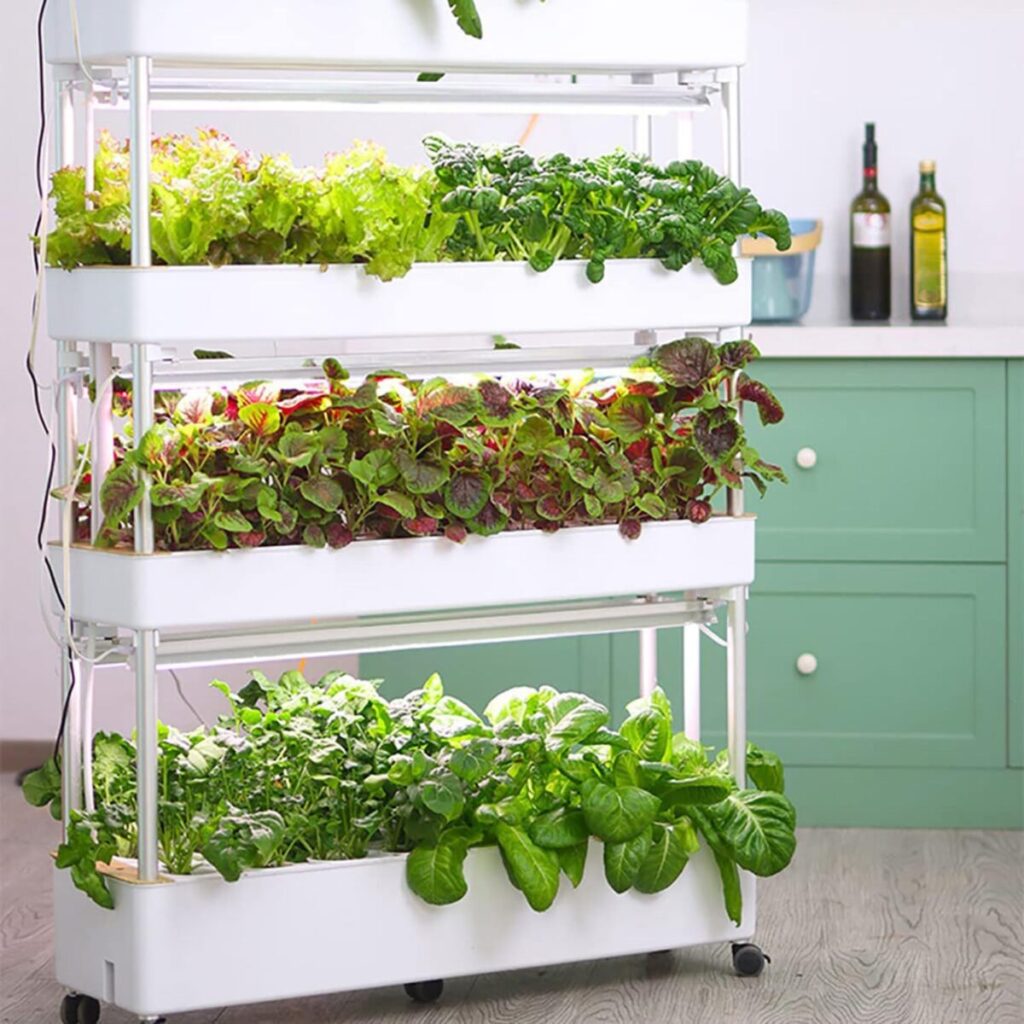
Why are Vertical Gardening Systems so Popular?
Vertical gardening has become a popular choice for urban dwellers and gardening enthusiasts alike and for a good reason. The primary motivation behind adopting vertical gardening practices is the efficient use of limited space.
Vertical gardening allows individuals to maximize their green footprint without sacrificing square footage in densely populated urban areas, where space is often a premium.
This innovative approach addresses spatial constraints and enhances accessibility, making it easier for people with small balconies, patios, or indoor spaces to cultivate a thriving garden. Moreover, vertical gardening promotes sustainability by optimizing water and soil usage and offering creative and aesthetically pleasing solutions to transform any space into a lush and vibrant haven.
Whether driven by a desire for fresh homegrown produce, a love for greenery, or a commitment to sustainable living, vertical gardening emerges as a practical and visually appealing solution for the modern gardener.
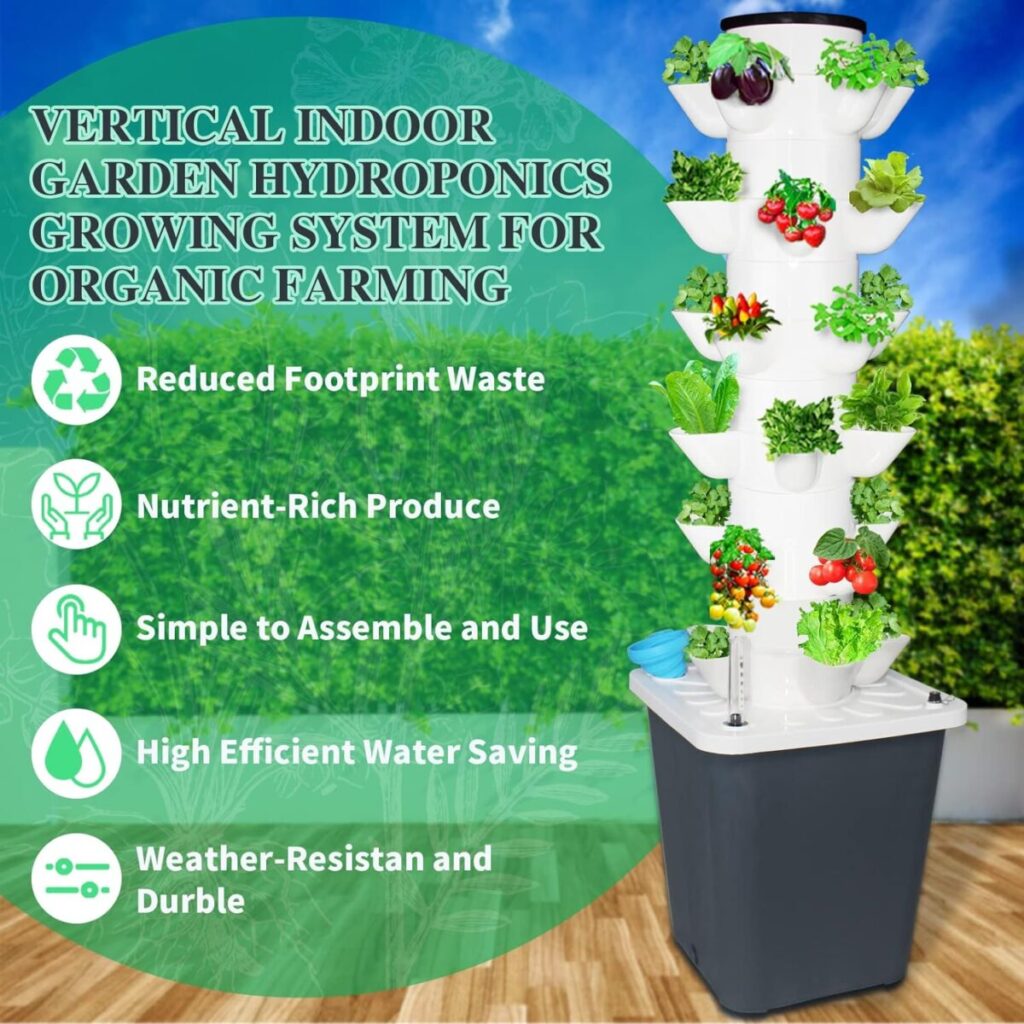
The Pros and Cons of Vertical Gardening
Pros of Vertical Gardening:
- Space Efficiency: Vertical gardening maximizes limited space, making it ideal for small balconies, patios, or urban environments where horizontal space is limited.
- Aesthetic Appeal: Vertical gardens add a visually stunning element to any space, transforming walls or structures into vibrant, living works of art. They can enhance the overall aesthetic of indoor and outdoor areas.
- Improved Accessibility: With plants arranged vertically, it becomes easier to access and care for them. This especially benefits individuals with limited mobility or who prefer a more convenient gardening experience.
- Better Air Circulation: Vertical arrangements allow for improved airflow around plants, reducing the risk of fungal diseases. This can contribute to healthier and more robust plant growth.
- Water Efficiency: Many vertical gardening systems have self-watering features, ensuring efficient water usage and reducing the risk of overwatering or underwatering. This is particularly advantageous in areas with water conservation concerns.
- Creative Expression: Vertical gardening provides an opportunity for creativity and customization. Gardeners can experiment with various layouts, plant combinations, and structures, expressing their unique style in a compact space.
- Indoor Gardening: Grow foods indoors easily and in a compact spot in your kitchen or anywhere in your home!
Cons of Vertical Gardening:
- Initial Cost: Setting up a vertical garden may involve some initial investment, especially if you opt for advanced systems or structures. However, long-term space and water efficiency savings can often offset this cost.
- Maintenance Challenges: Some vertical gardening systems may require frequent maintenance, such as pruning, training plants, and addressing potential pest issues. Regular upkeep is crucial for the health and aesthetics of the garden.
- Limited Plant Selection: Certain plants may not be well-suited for vertical arrangements, limiting the variety of species you can grow. It’s essential to choose plants that are compatible with vertical gardening conditions.
- Sunlight Dependence: Adequate sunlight is crucial for the success of vertical gardens. Certain plants may struggle to thrive if your chosen location receives limited sunlight, and supplemental lighting may be necessary.
- Learning Curve: For beginners, a learning curve may be associated with the specific needs of vertical gardening. Understanding the requirements of different plants and how they interact in a vertical setting takes time and experimentation.
- Weight Considerations: Depending on the structure and materials used, the weight of a vertical garden can be a concern. Ensure that the chosen wall or support can handle the load to prevent safety issues.
While vertical gardening offers numerous benefits, it’s essential to consider these potential drawbacks so you can make a smart investment.
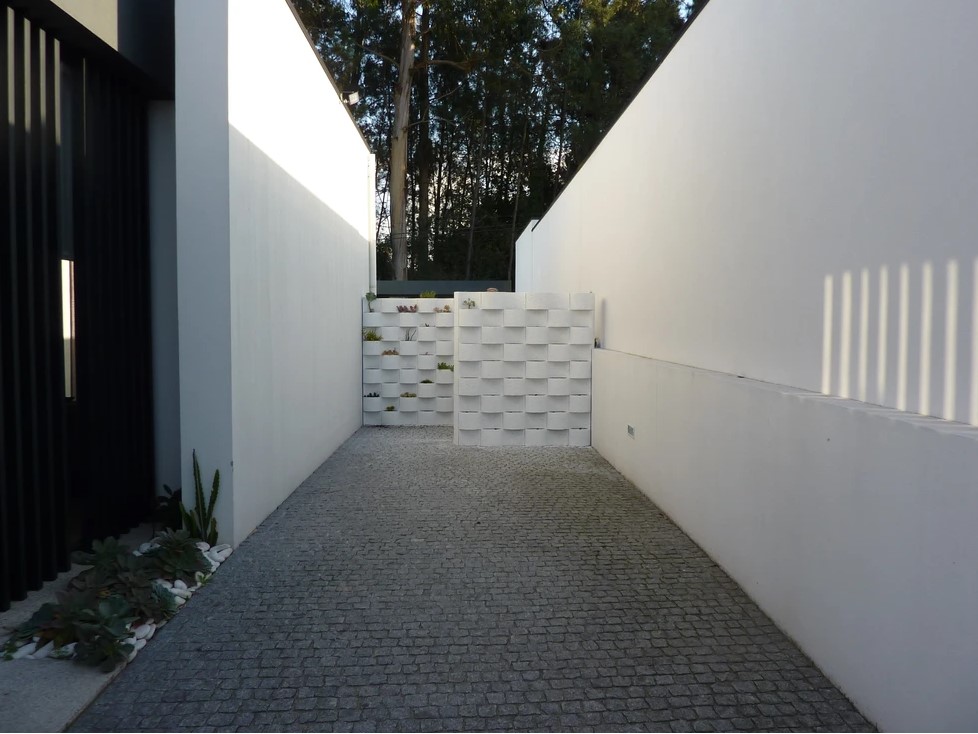
The Best Vertical Gardening Systems Available
Gardners from anywhere enjoy the benefits that vertical gardening has to offer. However, vertical gardening in cities can change the game for apartment dwellers and offices! Community garden projects and vertical gardening initiatives are transforming cityscapes. Explore a variety of indoor vertical gardening systems, from hydroponic setups to wall-mounted planters.
Use specialized systems like BloomWall Vertical Gardens to bring the benefits of vertical gardening to patios and entryways. These permanent landscape projects are great for renovators and new homes alike.
Brands like Gardyn and AeroGarden offer innovative solutions for cultivating a green haven within your home. So, diversify your garden with a mix of vertical vegetable gardens! Experiment with different plant combinations and vertical gardening systems to find the perfect balance for your space.
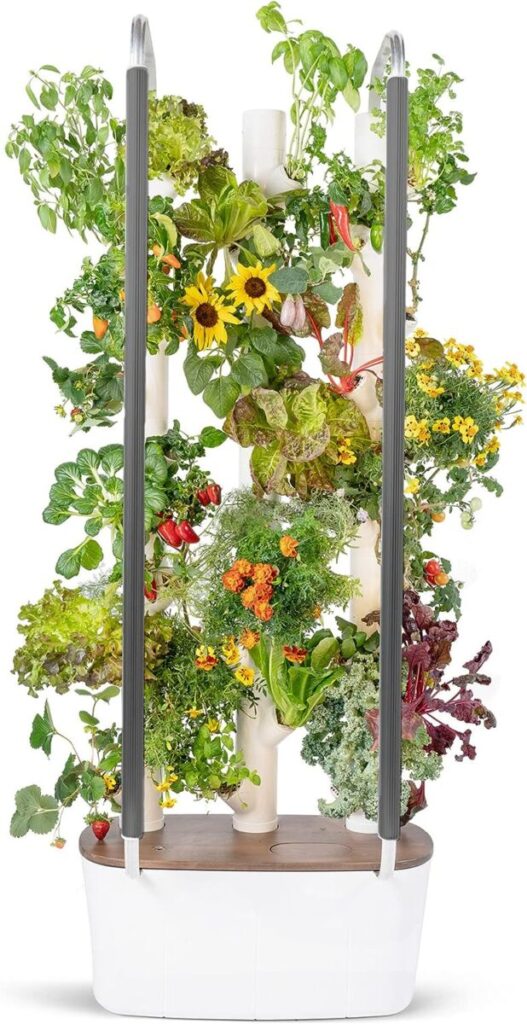
The Best Self-Watering Vertical Gardens
Self-watering vertical gardens are a game-changer for those with a busy lifestyle. Systems like the Gardyn 3.0 Hydroponics Growing System ensure your plants receive the right amount of hydration without constant monitoring. Similarly, brands like GreenStalk gained popularity for their efficient self-watering vertical gardening solutions.
There are many drip irrigation systems available for potted plants, too.
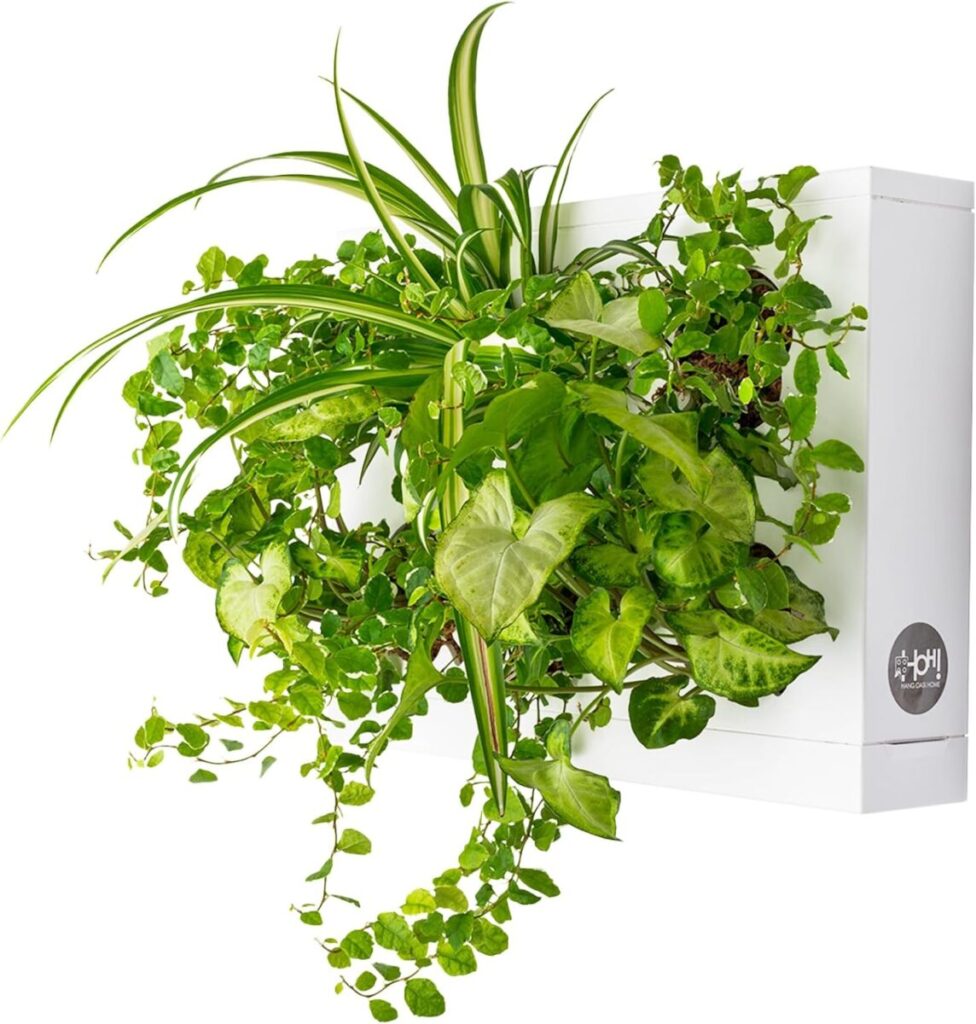
The Best Indoor Vertical Gardens and Systems
Bring the outdoors inside with indoor vertical gardening systems. From space-saving tube planters to elegant tower setups, options like the Greenstalk cater to the needs of vertical gardening indoors.
Transform your living space with indoor vertical gardening options. We love the modern wall-mounted planters like the Ortis Indoor Vertical Garden System to create a lush and inviting indoor oasis.
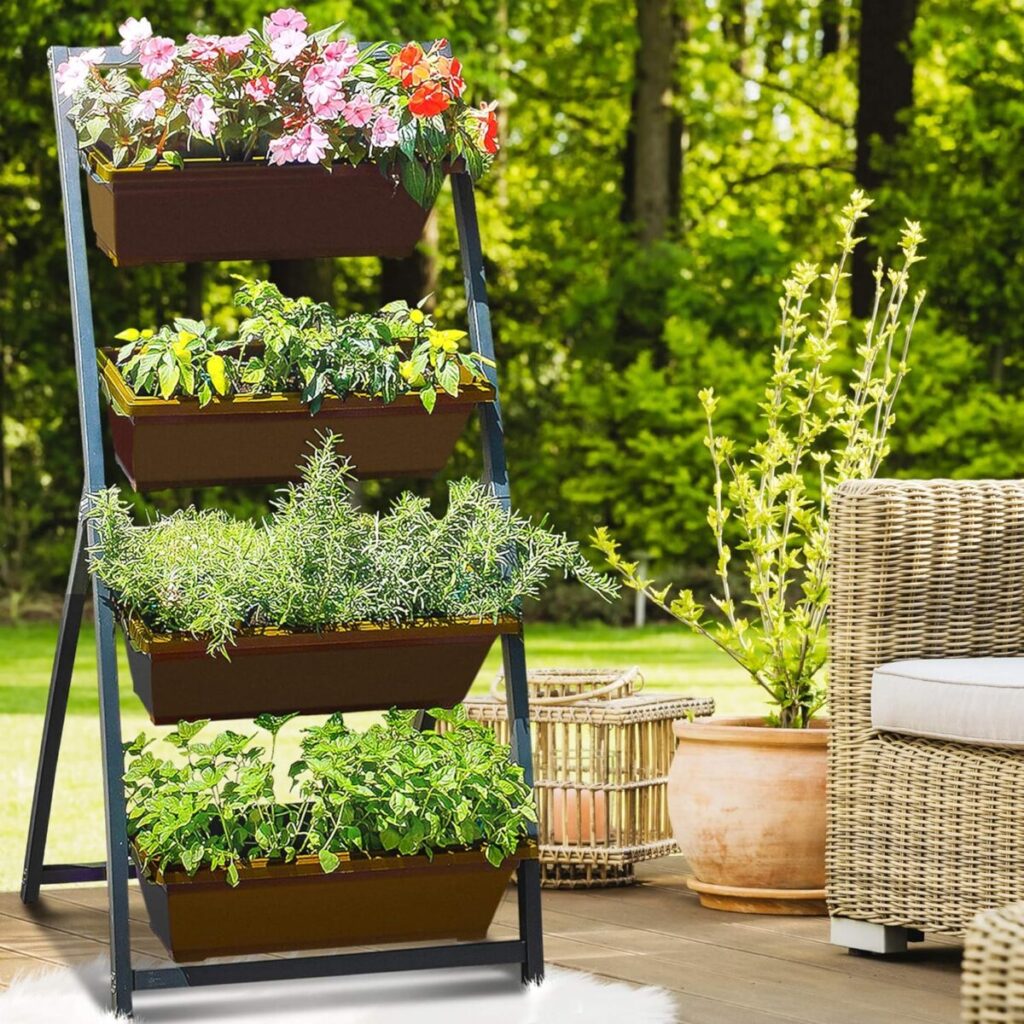
Vertical Gardening in Raised Beds
Elevate your vegetable garden with raised bed vertical gardening. This method not only maximizes space but also provides better drainage. So, explore options like the Outland Living 4-foot Vertical Raised Bed for a sturdy and practical solution.
This is the best-raised bed vertical gardening system because of its flexibility and affordability. Combine the benefits of raised beds and vertical gardening for a winning combination.
Vertical Tomato Gardening
Tomatoes thrive in vertical gardening setups. Consider utilizing tomato cages or towers like the Hydrofarm GCTT Tomato 3-Foot Tree Tower for efficient use of space and improved airflow, resulting in healthier plants.
Take your tomato game to new heights with vertical tomato gardening systems. Vertical planters and towers like the GREEN MOUNT Raised Garden Bed Planter ensure your tomatoes reach for the sky while simplifying maintenance.
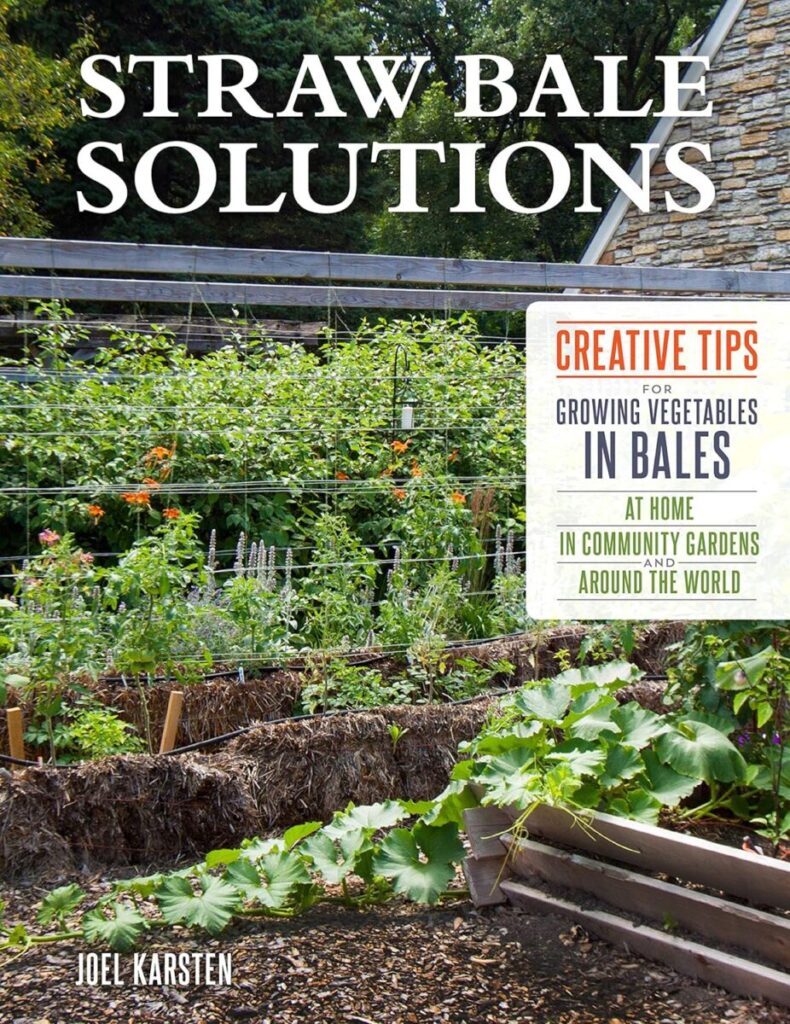
Try Budget-friendly Vertical Straw Bale Gardening
For a sustainable and eco-friendly approach, explore vertical straw bale gardening. This technique involves using straw bales as planting containers. Look for guides and resources to kickstart your vertical straw bale gardening journey.
The Best System for Watermelon Vertical Gardening
Surprisingly, watermelons can also thrive in vertical gardening setups. Explore creative solutions like vertical gardening pallets or cattle panels for a DIY trellis. Since melons tend to grow large and heavy, they do best with heavy-duty trellises and watermelon hammocks to support the fruit while it ripens.
The Best Quality Vertical Gardening Planter for the Money
Investing in a versatile vertical gardening planter can work on any budget. Brands like Greenstalk offer economical modular systems that accommodate various plants, making it easy to customize your vertical garden.
There are many great options and brands of vertical gardening supplies and products, and you don’t have to spend a fortune on quality garden equipment. You will find that there is a perfect product to meet your needs.
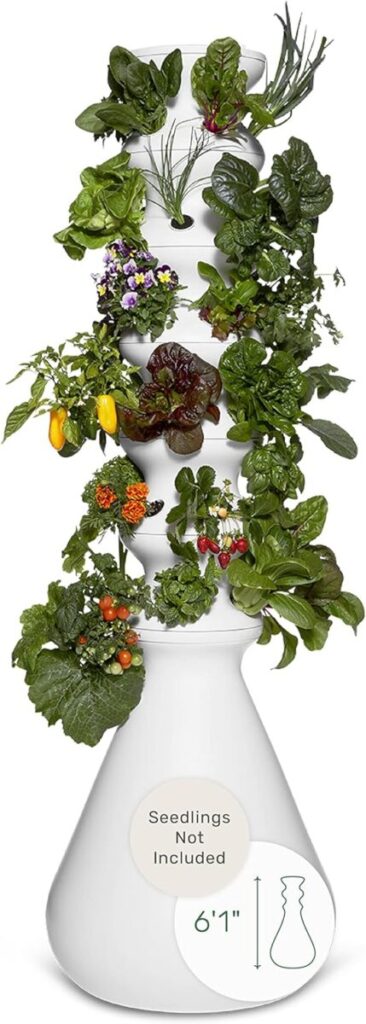
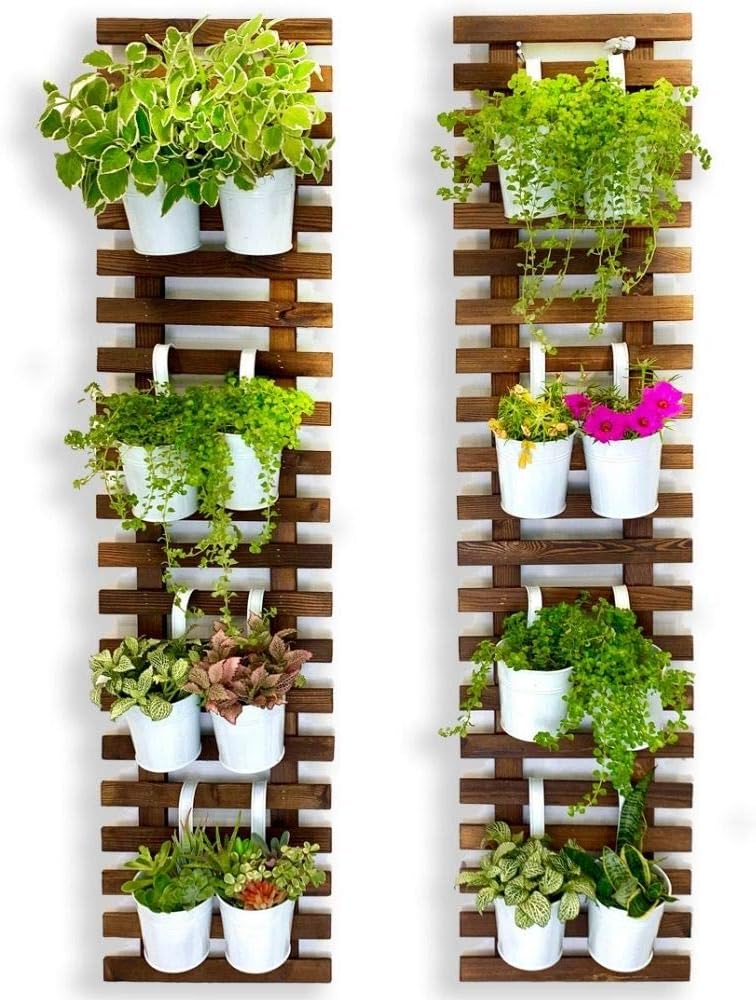
Cute Vertical Vegetable Gardening Ideas
Unleash your creativity with various vertical vegetable gardening ideas. From pallet vertical gardening to using unique containers, the possibilities are endless. Also, check out our Vertical Gardening Pinterest board for inspiration and tips.
Vertical Gardening Tube Planters and Wall-Mounted Hydroponic Kits
Incorporate tube planters into your vertical gardening repertoire. These cylindrical containers provide a sleek and modern aesthetic while maximizing space. So, explore options like Vivosun’s mounted PVS Hydroponics Vertical Gardening System.
Our Favorite Vertical Gardening Tower
Make a bold statement with a vertical gardening tower. Tower systems like the Greenstalk Vertical Planter offer a tiered approach, allowing you to grow various plants in a compact space. If you are on a budget, a lower-priced option is the 5-tier planter by Mr. Stacky.
Pro-tip: Did you know that you can grow zucchini vertically? Yes, even zucchinis can thrive in vertical gardens. Utilize trellises or vertical supports to encourage upward growth and save valuable ground space.
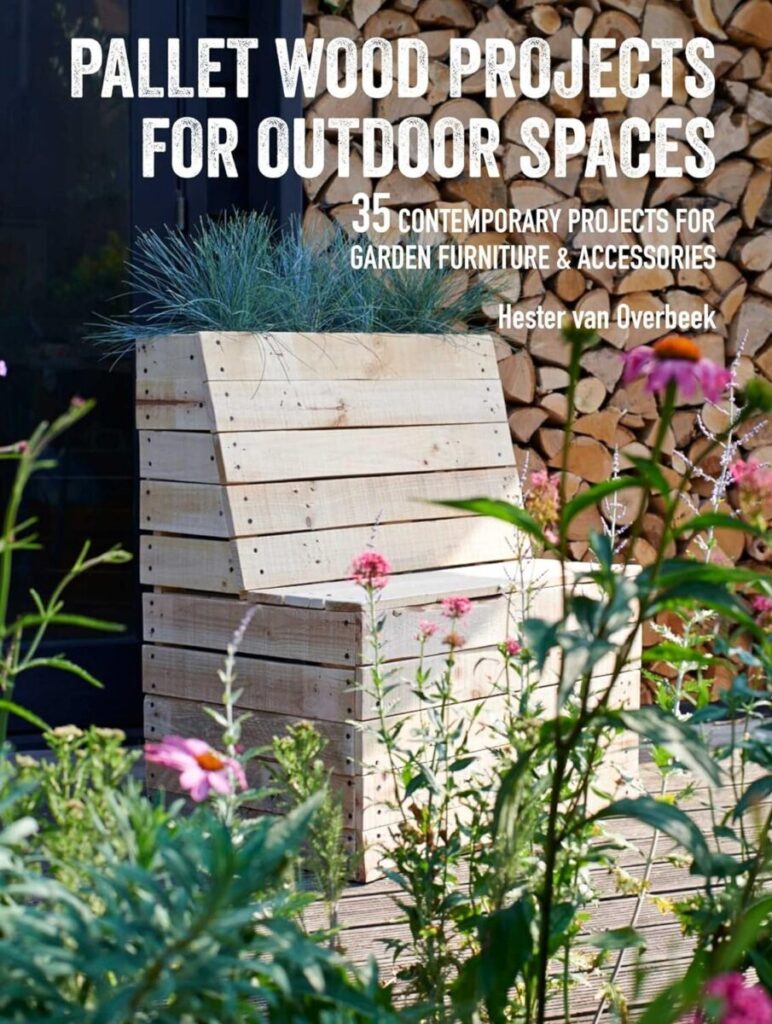
Pallet Vertical Gardening
Revamp pallets into vertical gardening wonders. Use them as a canvas for your greenery and create a visually stunning vertical garden with minimal effort. So, upcycle pallets into vertical gardening masterpieces! This cost-effective, eco-friendly approach allows you to create unique pallet vertical gardens showcasing your gardening prowess.
How to Start Gardening Vertically
To get started, begin by assessing your available space and sunlight exposure. Whether you have a balcony, patio, or indoor area, understanding the conditions will help you choose the right plants and systems.
Next, select a suitable vertical gardening system based on your preferences and the available space—options range from wall-mounted planters and vertical towers to tiered structures. Ensure proper drainage and consider the convenience of self-watering systems for an efficient setup.
Choose plants that thrive in vertical arrangements, such as herbs, strawberries, or compact vegetables.
Invest in quality soil and fertilizers to support healthy plant growth. Utilize online resources, gardening forums, and tutorials for inspiration and guidance on maintaining a successful vertical garden.
Remember, experimentation is key, so don’t be afraid to try different layouts and plant combinations until you find the perfect vertical gardening setup that suits your space and style.
Our Best Tips For Vertical Gardening Success!
- Choose the Right Location: Assess the available space and sunlight exposure to select the optimal location for your vertical garden. Different plants have varying sunlight requirements, so understanding your space is crucial.
- Select Appropriate Plants: Opt for plants that thrive in vertical arrangements and suit your climate. Herbs, strawberries, and compact vegetables are excellent choices for vertical gardening.
- Invest in Quality Soil: Good soil is the foundation of a successful vertical garden. Use a nutrient-rich potting mix that provides proper drainage to ensure your plants receive the essential nutrients for healthy growth.
- Consider Self-Watering Systems: Invest in self-watering vertical gardening systems to simplify maintenance and ensure consistent hydration. Hydroponic systems efficiently deliver water to your plants, reducing the risk of overwatering or underwatering.
- Utilize Vertical Gardening Structures: Choose a suitable vertical gardening structure based on your available space and aesthetic preferences. Depending on your needs, wall-mounted planters, towers, and tiered setups can all be effective.
Don’t Forget These Expert Garden Tips:
- Optimize Plant Placement: Arrange your plants strategically to maximize sunlight exposure and facilitate proper airflow. Consider each plant’s growth habits to prevent overcrowding and ensure efficient use of space.
- Regular Maintenance: Stay committed to regular maintenance tasks, including pruning, weeding, and fertilizing. Check for signs of pests and diseases to address issues promptly and keep your vertical garden thriving.
- Experiment with Layouts: Don’t be afraid to experiment with different layouts and plant combinations. Vertical gardening allows for creative expression, so try out various arrangements until you find the one that suits your space and aesthetic preferences.
- Stay Informed: Stay updated on vertical gardening trends, tips, and techniques. Join gardening communities, attend workshops, and explore online resources to continually enhance your knowledge and skills.
- Be Patient and Observant: Vertical gardening, like any gardening endeavor, requires patience. Observe the growth patterns of your plants, learn from successes and challenges, and adjust your approach accordingly. The joy of a thriving vertical garden is well worth the time and effort invested.

The Best Veggies for Indoor Vertical Gardening
Growing vegetables indoors vertically can be a rewarding and space-efficient way to cultivate fresh produce. Here’s a list of some of the best indoor vegetables that thrive in vertical gardening setups:
- Lettuce: Compact, quick-growing varieties like Butterhead and Romaine are well-suited for vertical planters or wall-mounted systems.
- Herbs (Basil, Mint, Cilantro): Herbs are perfect for vertical gardening, as they often have shallow root systems. Use wall-mounted herb gardens or tiered vertical planters.
- Spinach: Spinach is a leafy green that adapts well to vertical gardening. Choose a wall-mounted planter or vertical tower for efficient use of space.
- Kale: Like spinach, kale is an excellent choice for vertical gardening systems. Consider vertical towers or hanging planters.
- Cherry Tomatoes: Dwarf or cherry tomato varieties can thrive indoors with the support of vertical gardening systems like hanging planters or compact vertical towers.
- Peppers: Compact pepper varieties, such as mini bell or chili peppers, can be grown vertically in wall-mounted planters or compact tower systems.
Grow These Vertically Indoors or Outside
- Radishes: Radishes have a quick growing cycle and are well-suited for vertical gardening. Utilize wall planters or vertical pallet gardens.
- Strawberries: Perfect for hanging planters, strawberries can dangle down, making them a visually appealing and practical choice for indoor vertical gardening.
- Microgreens: Grow a variety of microgreens vertically in trays or stackable systems. They’re nutrient-dense and have a short growing cycle.
- Carrots: Choose shorter carrot varieties and grow them in vertical planters or elevated containers.
- Green Onions: Vertical wall-mounted planters or hanging containers are excellent for growing green onions indoors.
- Beans (Bush Varieties): Compact bush bean varieties can be grown in vertical gardening setups, such as wall-mounted containers or compact towers.
When growing vegetables indoors vertically, consider factors like light availability, container size, and support structures. Providing adequate light and maintaining proper care will contribute to a successful indoor vertical garden.
Fruits to Grow Vertically
- Strawberries: Ideal for hanging planters or vertical towers, strawberries thrive in elevated positions and cascading arrangements.
- Tomatoes: Vertical tomato gardening is widespread, with cages, trellises, or towers supporting the growing plants.
- Cucumbers: Vertical trellises or wall-mounted planters work well for cucumbers, encouraging upward growth and saving space.
- Watermelon: Specialized vertical gardening systems for larger fruits or creative setups like vertical pallet gardens can be adapted for growing watermelons.
- Grapes: Vertical trellises are perfect for training grape vines, allowing them to climb and produce fruit organizationally.
- Melons (such as Cantaloupe): Similar to watermelons, melons can benefit from vertical gardening methods, especially if space is limited.
- Kiwi: Vertical trellises or arbors support kiwi vines in climbing and producing unique fuzzy fruits.
- Berries (Blueberries, Raspberries, Blackberries): Vertical towers, hanging planters, or wall-mounted systems suit these bushy fruits.
- Pomegranates: Compact varieties of pomegranates can be grown in vertical containers or wall-mounted planters.
- Apples and Pears (Dwarf Varieties): Espalier techniques against walls or fences are effective for growing dwarf apple and pear trees vertically.
- Passionfruit: Vertical trellises or arbors allow passionfruit vines to climb and produce exotic fruits.
- Figs: Espalier techniques or vertical gardening structures can be used for growing fig trees against walls.
Remember to consider the specific needs of each fruit, including sunlight requirements, support structures, and potential weight considerations. Vertical gardening provides a creative and space-efficient way to cultivate many fruits, even in limited spaces.
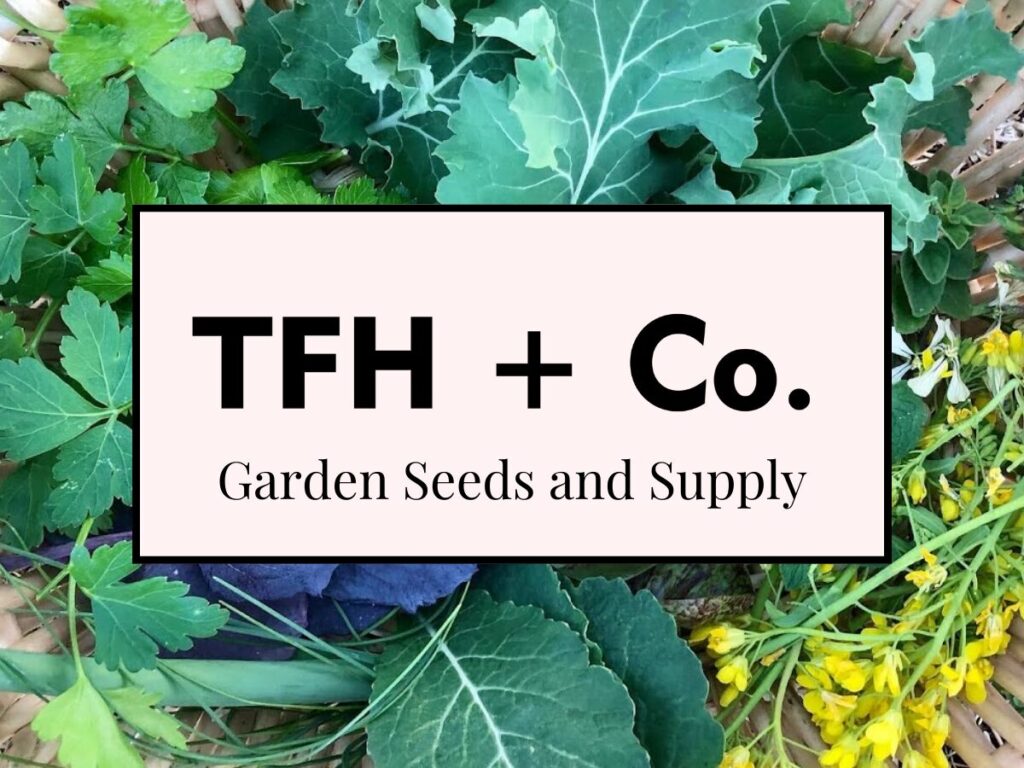
Houseplants That Grow Well in Vertical Gardening Systems
Vertical gardens offer a versatile canvas for cultivating various plants beyond fruits and vegetables. Here are some plant options that thrive in vertical gardening systems:
- Herbs: Beyond the culinary herbs commonly grown, consider ornamental herbs like lavender or rosemary for added fragrance and visual appeal.
- Flowers: Choose various flowering plants to add color and beauty to your vertical garden. Options include petunias, impatiens, begonias, and nasturtiums.
- Succulents: Drought-tolerant and visually striking, succulents are well-suited for vertical arrangements. Their unique shapes and colors create an eye-catching display.
- Ferns: These shade-loving plants are perfect for vertical gardens in areas with limited sunlight. Choose fern varieties like maidenhair or Boston ferns.
- Ivy: Climbing and trailing ivy species can elegantly drape down a vertical surface, adding a touch of greenery and sophistication.
Less Common Plants for the Creative Vertical Gardener
- Ornamental Grasses: Bring texture and movement to your vertical garden with ornamental grasses. Choose varieties like fountain grass or feather grass for a dynamic display.
- Bromeliads: These tropical plants with vibrant, long-lasting flowers can be grown vertically, adding a touch of exotic beauty to your garden.
- Air Plants (Tillandsia): These unique plants don’t require soil and can be attached to vertical surfaces, creating a distinctive and low-maintenance display.
- Ground Covers: Some ground cover plants, like creeping thyme or sedum, can be adapted to vertical gardening, creating a lush and carpet-like effect.
- Bamboo: Certain clumping bamboo varieties are well-suited for vertical gardening, adding a touch of elegance with their tall and slender culms.
- Fragrant Plants: Introduce aromatic plants such as lavender, jasmine, or scented geraniums to infuse your vertical garden with delightful fragrances.
When selecting plants for your vertical garden, consider factors like sunlight exposure, watering needs, and the overall aesthetic you want to achieve. Mixing different types of plants can create a visually dynamic and diverse vertical garden that suits your preferences.
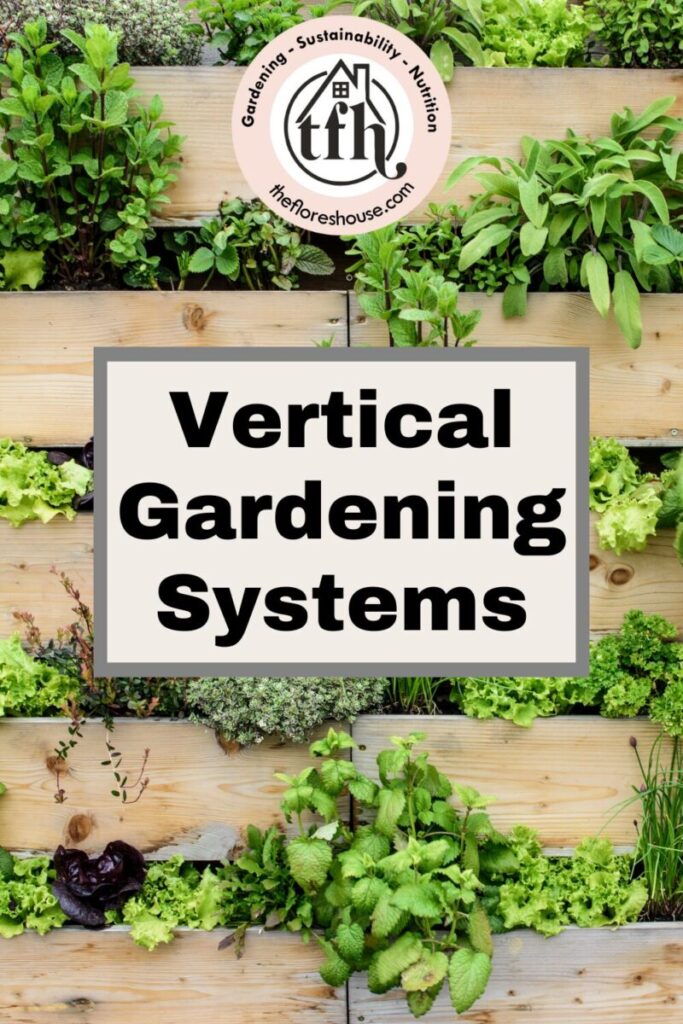
Let’s Recap: Our Vertical Garden Picks
Vertical gardening offers endless possibilities, whether you’re growing succulents, tomatoes, watermelons, or fruits and vegetables. With the best vertical gardening systems on the market, you can turn any space, indoors or outdoors, into a flourishing green paradise. Embrace the vertical gardening revolution and elevate your gardening experience to new heights!
We Love These Vertical Garden Systems:
- Greenstalk VerticalTower Gardens
- Gardyn 3.0 Indoor Hydroponic Vertical Garden System
- Ortis Indoor Vertical Garden System
- Outland Living 4-foot Vertical Raised Bed
- Hydrofarm GCTT Tomato 3-Foot Tree Tower
- FAXIOAWA Indoor Garden Hydroponic Growing System
- GREEN MOUNT Raised Garden Bed Planter
- OvyNewzly Tower Garden Hydroponic Growing System
- Shoplala Vertical Pallet Garden
- 5-tier planter by Mr. Stacky
- Vivosun’s mounted PVS Hydroponics Vertical Gardening System
This post taught which vertical gardening systems are best for your next garden project.

